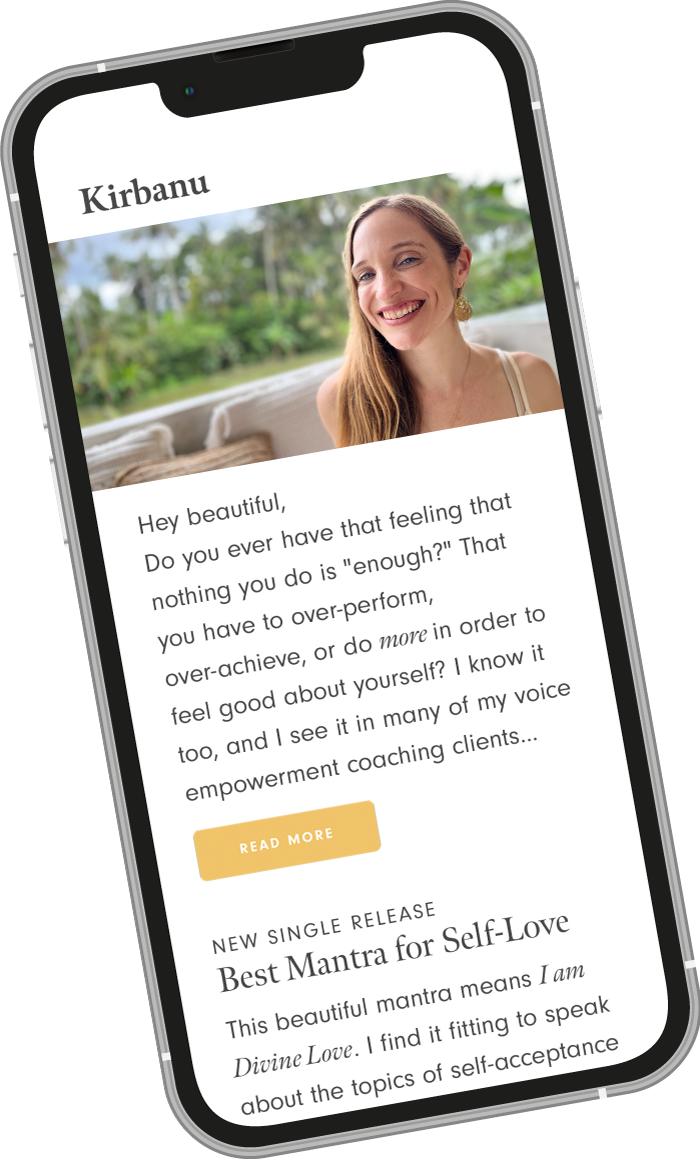Exploring the Healing Voice as a Path to Emotional Release and Reconnection
Rediscovering Your Voice
Have you ever noticed how humming calms you down? Maybe it happens in the shower, while comforting a child, or simply during a quiet moment when you need soothing. There’s something ancient and wise in the way sound ripples through the body. That quiet vibration? It’s your nervous system exhaling. Your emotions moving. This is the beginning of the healing voice – a sound that doesn’t perform, but transforms.
Our voices carry an ancient memory—before words, we cooed, sighed, wailed, and sang. The healing voice isn’t about performance; it’s about presence. It’s a return home to yourself—gently, through breath and sound.
Whether you’ve experienced trauma, grief, heartbreak, or simply feel disconnected, your voice can be a path back to wholeness. Sound won’t take you away from your pain—it walks with you toward softness, truth, and deep integration.
For me, reclaiming my voice began not with song, but with silence. It was during a time of deep personal upheaval when even speaking felt like too much. But a whisper came—then a hum. It was subtle, almost imperceptible. Yet in that tiny moment of resonance, something shifted. I felt myself again. I wasn’t trying to sound good. I was simply aligning with my true sound. That is the healing voice: the sound that bridges the space between brokenness and becoming.
Sign Up Now to My Free Voice Course
Unlock Your Complete Voice!
*By signing up, you agree to the privacy policy and automatically subscribe to Kirbanu’s newsletter, which you can unsubscribe from at any time.
What Is the Healing Voice?
The healing voice is the intentional use of your unique sound for emotional regulation, expression, and liberation. It’s not about singing beautifully—it’s about sounding true. Feeling your own resonance from the inside out.
Sometimes it’s as simple as a sigh. A hum while daydreaming. A long tone that vibrates in your chest. These are somatic doorways—gateways for stored emotion to move and release.
Your voice doesn’t need to be trained—it just needs to be welcomed. With every tone, every vibration, you’re re-learning how to be fully present in your body, your breath, your truth.
How Emotional Wounds Affect the Voice—And Vice Versa
Emotional pain often lives in silence. Trauma, shame, grief—they constrict the breath, tighten the throat, and mute the natural impulse to express. Over time, we shrink our voices, speak only when “safe,” and carry tension in the jaw, neck, and chest.
But consciously created sound can reverse this. A soft hum soothes the nervous system. A guttural tone expresses rage. A deep moan unlocks hidden sorrow. The healing voice moves both ways: emotional wounds affect your voice, and your voice can liberate those wounds.
In somatic work, the voice is a direct portal into the body’s wisdom. Through raw, imperfect sound, we reclaim what words alone cannot reach.
Vocal Identity and the Impact of Trauma
When we experience trauma—especially in our formative years—it often severs our connection to our natural voice. We begin to edit ourselves, not just in speech, but in tone, volume, and even emotion. Over time, our voice becomes shaped by protection rather than presence.
In my Holistic SomaVoice® Training, we explore the relationship between voice and trauma, and how we can intentionally use the healing voice to bring integration within. I often refer to traumatic elements within ourselves as “complexes”: this is an internal felt experience of blockage, often accompanied by physical sensation, emotional overwhelm, and disempowering thoughts. Trauma lives in the body—and so does the healing.
By bringing voice into those blocked places, we can begin to shift them—not by force, but with curiosity, intention, and resonance.
Exercise: Intentionally Toning into a Block
- Sit or lie down and scan your body for an area of tension or discomfort.
- Place your hand there and gently focus your awareness.
- Begin softly toning “mmm” into that space. Imagine the sound like a beam of light entering the tension.
- Imagine your voice is meeting that area of tension or discomfort softly, with gentle love and compassion.
- You may like to explore using different pitches whilst humming into that part. Take your time with this, pausing to notice any shifts in that space.
- Ask the area, “What do you need right now?” and let the response guide your next sound.
Repeat this practice regularly to cultivate safety, presence, and trust in your own unique healing voice.
The Science & Energy of Vocal Healing
Science is now catching up to what mystics have long known: your voice heals. When you hum, chant, or sing, you activate the vagus nerve, shifting your body into a state of calm, connection, and restoration.
Research shows vocal sound lowers cortisol (stress) and raises oxytocin (the bonding hormone). Through the principle of resonance, sound also travels through tissue and bone, offering a gentle internal massage and can also change the energetic state of areas it comes into contact with. Your intention guides this and this your voice can be used for internal regulation, state change, self-connection and to facilitate deep inner healing.
Simple Practices to Awaken the Healing Voice
You don’t need a fancy space—just a quiet moment and a willingness to listen inward. Try this:
- Humming: Close your lips and let a gentle “mmm” vibrate your face and chest. Just 1–2 minutes can bring calm and coherence.
- Toning vowels: Try long vowels like Aaaaah, Eeeee, or Oooooh. Let your body guide you.
- Emotional sound release: Connect to a part within that needs expression and “give it your voice.” Sigh, moan, wail, cry—in a safe and private space. These aren’t dramatic gestures—they’re your body’s way of healing.
- Voice journaling: After writing, close your eyes and let your voice speak. It might be a melody, a whisper, or something completely unformed.
Mini Daily Practice
Sit comfortably. Breathe deeply 3 times. Hum softly for 1 minute. Tone “Ah” for another 2-3 minutes. Let out a deep sigh. Ask your heart: What does my voice need today? Then listen—and sound.
Self-Acceptance and the Voice
*from the Holistic SomaVoice® training
So many of us silence our voices not because we can’t speak, but because deep down, we don’t accept what we hear. Self-acceptance is the bridge between suppression and expression. It invites us to acknowledge our voice as it is, in all its rawness, vulnerability, and power.
When we stand in front of a mirror and whisper or sing our name, we begin building a bridge between the inner and outer self. This act of naming ourselves is an energetic claiming of presence and worth.
Exercise: Self-Acceptance Naming (Mirror Work)
- Gaze into your eyes in a mirror. Look into the middle, into your pupils.
- When ready, begin speaking your name aloud. Repeat it gently, with presence.
- Now shift to singing your name. Let the pitch vary. No need for melody—just let it flow.
- Observe the sensations that arise. Is there tension? Tenderness? Resistance?
- Let your voice move through whatever arises.
- End by wrapping your arms around yourself and saying: “I accept myself. I accept my voice.”
Practiced regularly, this simple act helps return you to a state of gentle presence and embodied expression.
The Courage to Reclaim Your Healing Voice
Reclaiming your healing voice is not a one-time act—it’s a layered process of remembering and rebuilding. Often, the fear of judgment or rejection doesn’t just come from others—it originates inside us. Our inner critic, shaped by years of conditioning, whispers that we are too loud, too emotional, too much.
But the truth is, your voice is not too much—it’s medicine. It carries wisdom from your deepest self and has the power to soothe, express, and alchemize. Every time you choose to vocalize instead of suppress, you invite more of your authentic self into the world.
And yes, that may come with vulnerability. But vulnerability is not weakness—it’s the birthplace of creativity, belonging, and empowerment. Start small. Start shaky. Start with the voice you have today.
Transformative Somatic Coaching
Break free from limiting habits, integrate and heal lingering blocks and learn to manifest your dreams with ease!
Creating a Safe Space
For your voice to feel free, it must first feel safe. Many of us carry internalized shame around making noise, especially emotional sound.
Set up a cosy, nurturing environment. This could be your bedroom, a warm car space, or a quiet corner in nature. Bring in objects that help you feel held—a candle, a warm tea, a playlist you love.
This is not about “sounding good.” It’s about sounding real. Some days your voice will flow. Other days it will hide. Your only task is to listen gently and follow the unfolding.
Integrating Healing Voice Work into Your Journey
Voice healing becomes most powerful when woven into your everyday life:
- Hum during walks or in nature
- Add sound during yoga or meditation. You could even begin a mantra practice.
- Pair vocal work with journaling, movement, or therapy sessions
- Let your inner child sing nonsense songs or make playful sounds
Sound becomes a bridge—not just a tool, but a trusted ally in your healing journey. Let it meet you where you are and walk with you at your pace.
The No-Sense Practice for Emotional Freedom
*from the Holistic SomaVoice® training
Sometimes the mind and the voice need a moment of pure freedom. The No-Sense Practice allows your body to express without rules, words, or logic. It unlocks spontaneous creativity and bypasses self-censorship.
Exercise: Gibberish Play
- Set a timer for 3 minutes.
- Begin speaking in total nonsense. Let it be silly, expressive, loud, soft—whatever flows.
- Use gestures, facial expressions, body movement.
- Let your inner child take over.
- When finished, sit quietly. Notice the space you created inside.
Gibberish clears the inner space for more authentic expression to rise.
Intuitive Singing—A Portal into Self-Energy
*from the Holistic SomaVoice® training
Intuitive singing is about letting your voice arise from the present moment, without agenda. It’s not about sounding good—it’s about sounding real. It’s about trusting what is emerging, and giving it space to come through.
Setting the Space for Intuitive Singing with Your Healing Voice
- Start with stillness: Sit quietly. Feel your body. Place one hand on your heart and one on your belly.
- Set an intention: Ask, “What would I like to feel more of?” or “What emotion wants to be heard?”
- Begin with breath: Let your exhale carry sound—hum, sigh, or tone.
Exercise: Intuitive Singing Practice
- Close your eyes and hum into your chest.
- Let your voice wander—no melody needed.
- Follow the sensation of the sound inside your body.
- Let tones rise and fall like waves.
- If an emotion arises, let your voice stay with it.
When done regularly, this becomes a spiritual practice of self-connection, self-acceptance, and creative freedom.
A Gentle Invitation Forward
Your voice is not broken and neither are you. It’s not too late. Even if you’ve been silent for years, even if someone told you to be quiet—your voice is still here. Patient. Waiting. Sacred. You posess a deeply healing voice.
Each sound is a reclamation. A remembering. A step toward feeling alive, expressive, whole.
So take a breath. Make a sound. Let it rise without judgment. Let it touch your edges, soften your armour, and remind you: you are fully, beautifully alive.
What does your healing voice want to say today? Let it rise. And if you’d like support on your journey, you’re warmly invited to download my free Voice Activation eBook or book a free 1:1 Voice Coaching session with me where I can guide you deeper into the essence of your voice.
Your voice is welcome here. Always.




